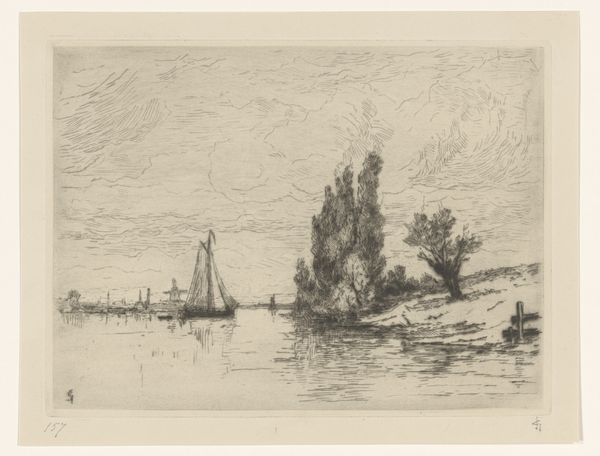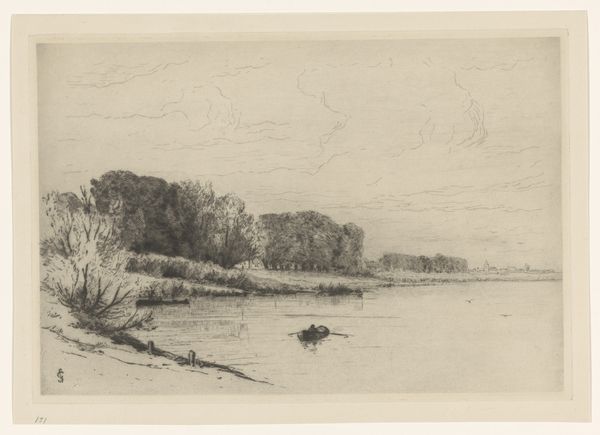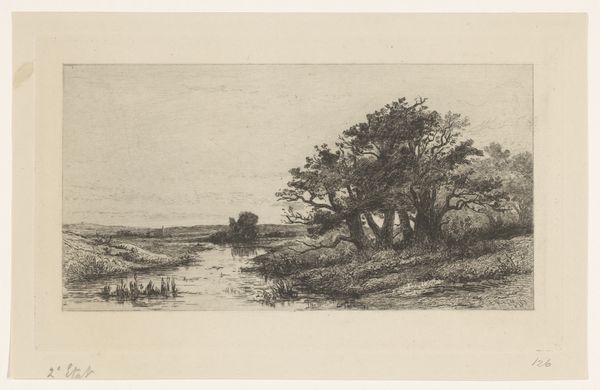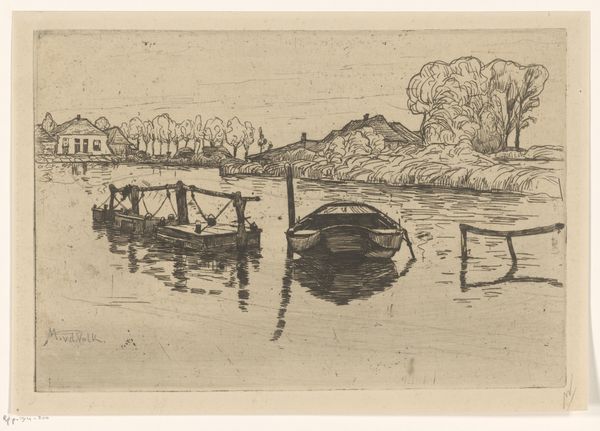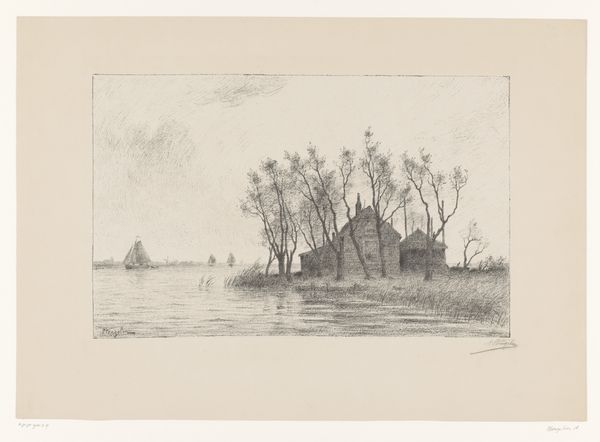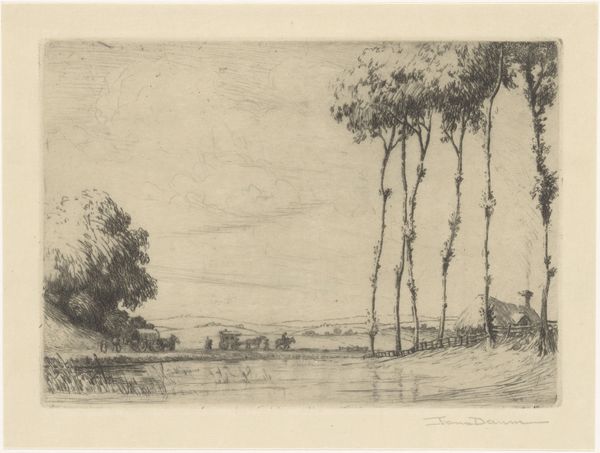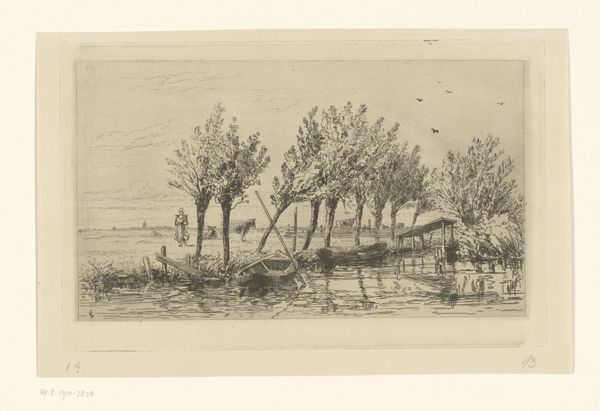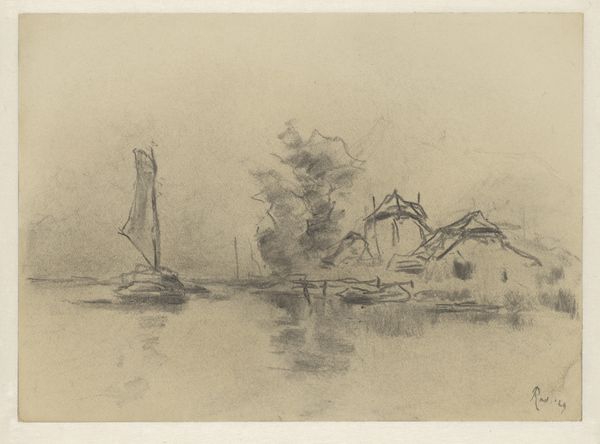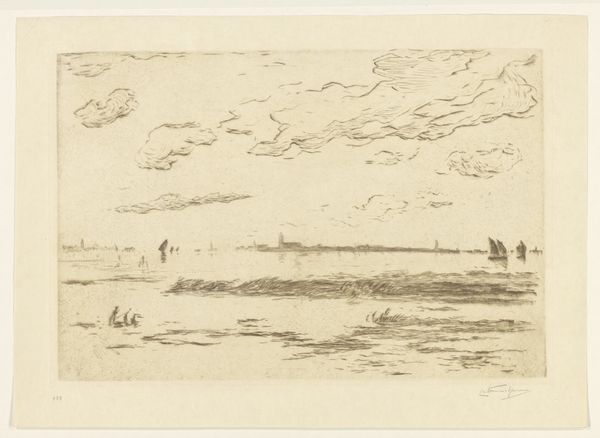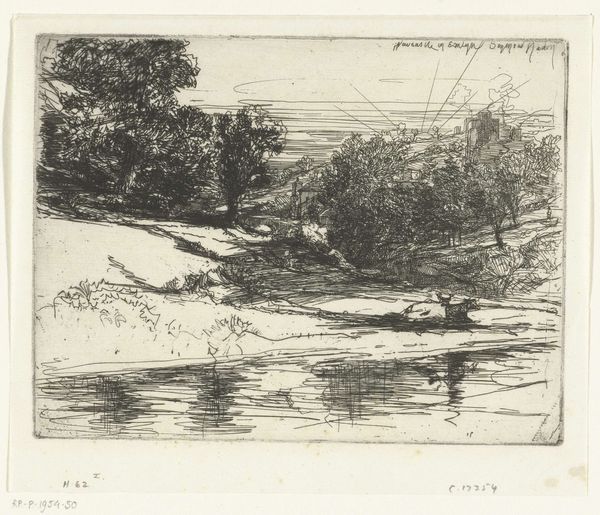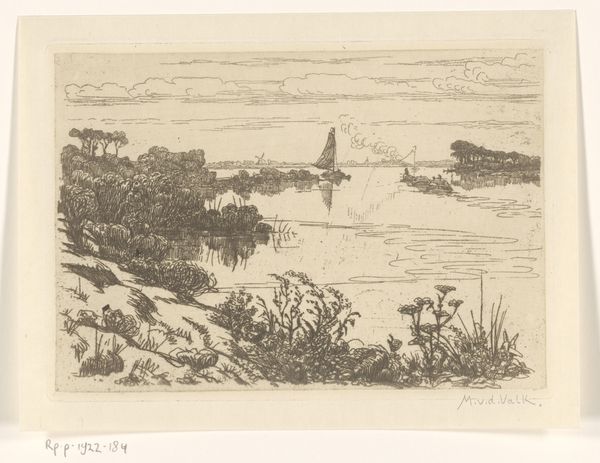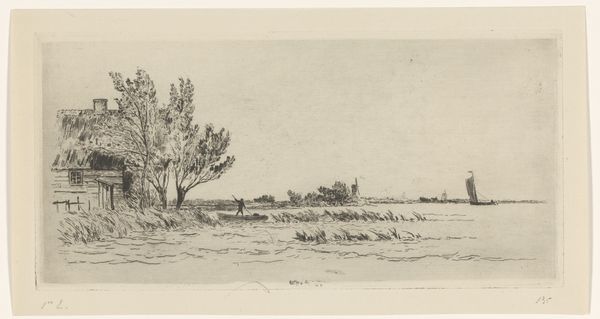
drawing, pencil
#
drawing
#
impressionism
#
landscape
#
pencil
#
realism
Dimensions: height 194 mm, width 284 mm
Copyright: Rijks Museum: Open Domain
Editor: Here we have "Polder Landscape," a pencil drawing by Willem Roelofs, made sometime between 1832 and 1897. I find it interesting how much detail he gets with just a pencil; it has this lovely, melancholic mood about it, like a fading memory. What stands out to you when you look at it? Curator: Melancholic, yes, like a song half-remembered! What strikes me is the raw honesty. You know, back then, so many artists were chasing grand, idealized landscapes. Roelofs here, though? He's giving us the real deal – the quiet, unassuming beauty of the Dutch polder. He uses the pencil almost like a whisper, capturing the subtle gradations of light and shadow, the dampness in the air. Do you notice how he balances the heaviness of the trees on the left with the open expanse of water on the right? Editor: I see that now. It feels less like a picturesque view and more like a moment captured, a specific place at a specific time. I guess it reflects the Realism movement, like the metadata indicates. Curator: Precisely! And beyond Realism, it even flirts with Impressionism in the fleeting quality of the light. This feels very intuitive; Roelofs wasn't trying to paint a perfect scene; he was trying to capture a feeling, an impression. This is a study of the artist's emotional reaction to that landscape. How interesting is that! Editor: It definitely changes how I see it now. It feels less like a picture, and more like a…well, like a very intimate conversation. I love it! Curator: Exactly! Roelofs invites us to partake of his experience of finding subtle grace in these ordinary landscapes. Art is so powerful because it asks you to consider yourself and the artist simultaneously.
Comments
No comments
Be the first to comment and join the conversation on the ultimate creative platform.
